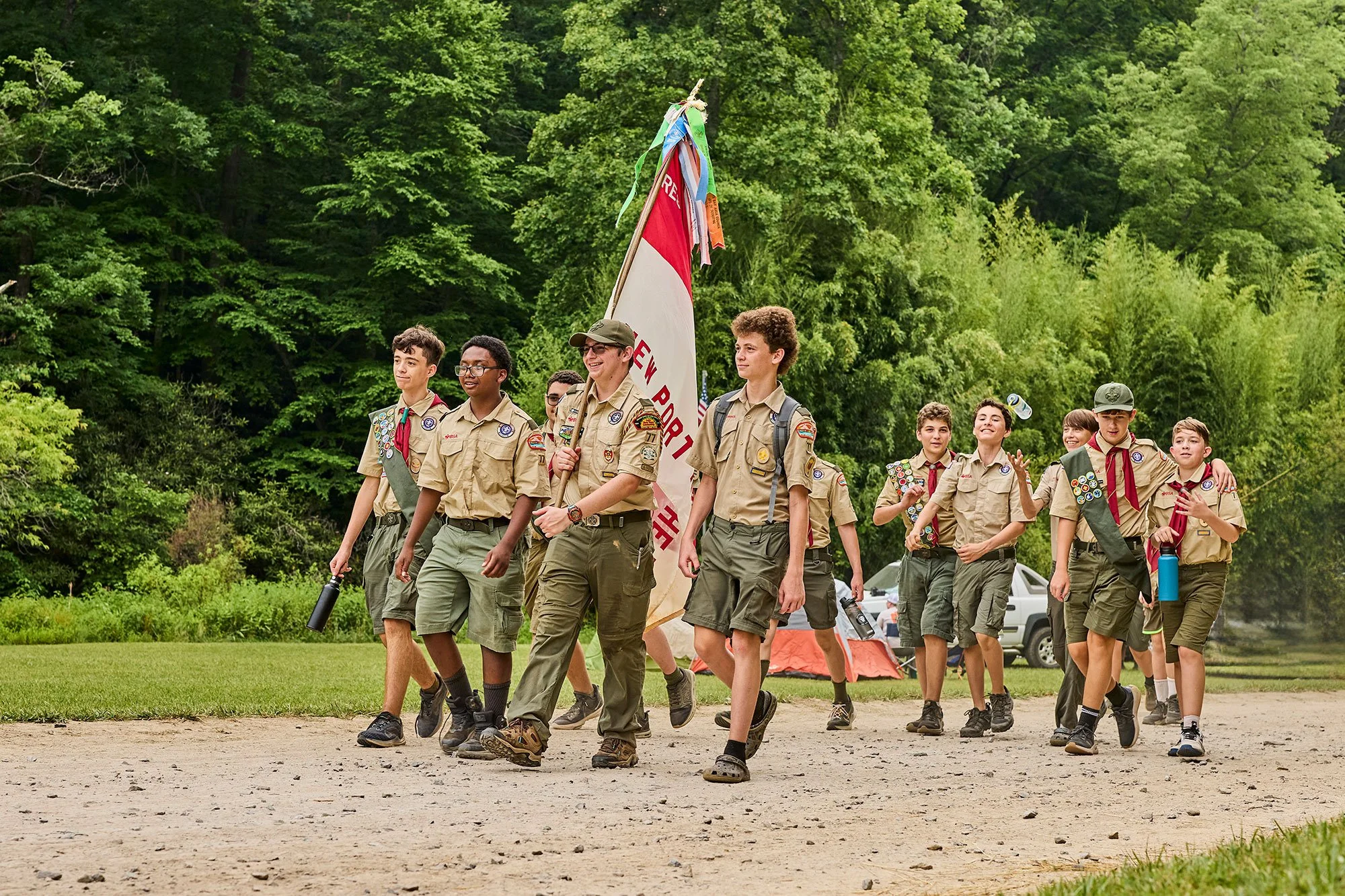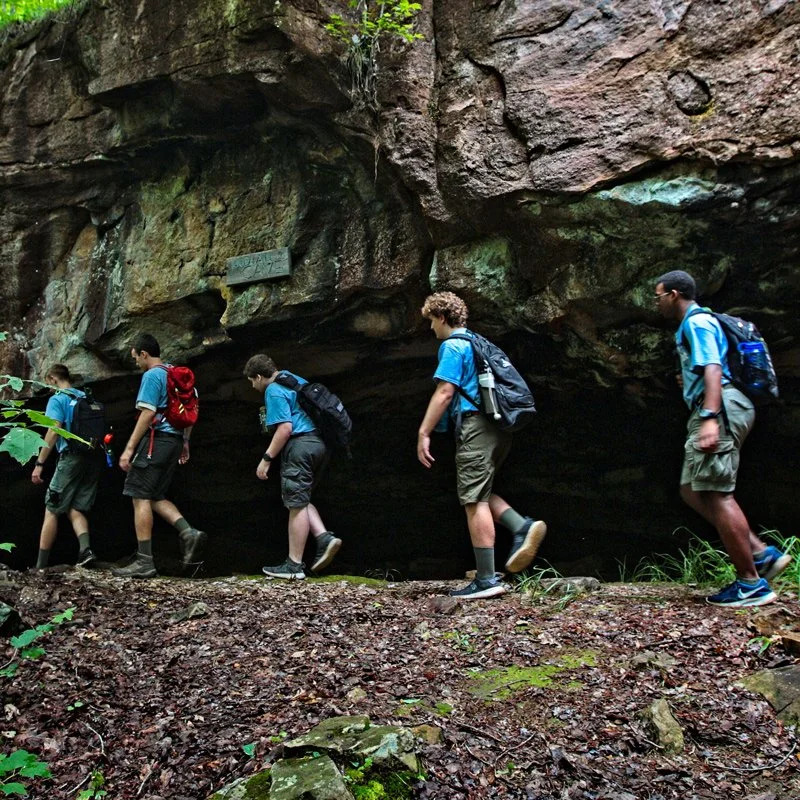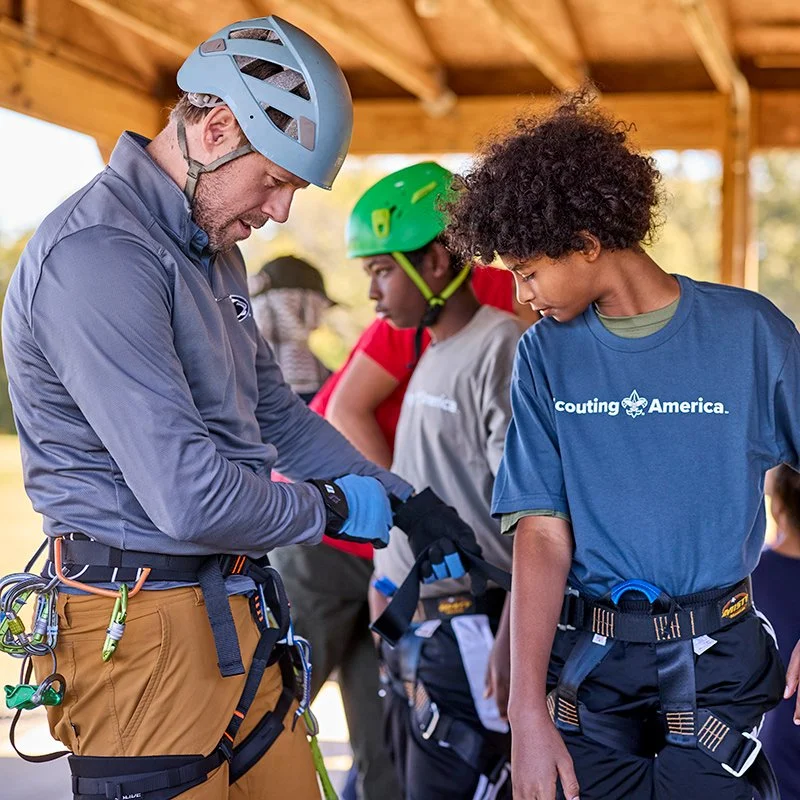
The Scouts BSA Program at the Chickasaw Council
Welcome to Scouts BSA!
Scouts BSA is the traditional Scouting experience where boys and girls ages 11–17 can develop outdoor survival skills, self-confidence, and ethics through youth planned activities with increased attention to service, community engagement, and leadership. No prior Scouting experience is required!
Scouts BSA 101 for Parents
-
Scouts BSA is where youth explore their interests and develop skills by participating in outdoor activities like hiking, camping, and canoeing. Scouts earn merit badges along the journey and work towards achieving Scouting’s highest rank — Eagle Scout.
-
Scouts typically meet once a week. Troops may hold special activities, like service projects or outdoor experiences, in place of or in addition to one of the weekly meetings.
-
Elected youth lead their troop and run the meetings at the guidance of the Scoutmaster and other adult leaders. Unlike Cub Scouts, Scouts BSA is a youth program planned mainly by the Scouts, not the parents.
-
Scouts BSA prepares youth to make ethical and moral choices over their lifetimes by instilling the values of the Scout Oath and Law. Throughout their time in Scouting, Scouts learn the value of hard work and experience the thrill of seeing it pay off.
Ranks & Advancement
Advancement is our method of promoting and encouraging ongoing involvement and commitment to keep youth engaged in the adventure! Scouts progress from rank to rank as they work their way up to Eagle Scout through advancement.
Scout
The Scout rank is the initial rank in the Scouts BSA program.
Tenderfoot
The Tenderfoot rank is the first advancement step after the Scout rank.
Star
The Star rank is the fifth rank and the first step in the journey toward the Eagle Scout rank.
Life
The Life rank is the sixth rank and the final step before achieving the Eagle Scout rank.
First Class
The First Class rank is a significant milestone, marking a Scout's comprehensive mastery of foundational Scouting skills.
Second Class
The Second Class rank is the third rank on the path to Eagle Scout, following Tenderfoot.
Eagle Scout
The Eagle Scout Award is the highest award available to youth members of Scouting America. It is the rank that every Scout works toward through advancement in the program.
What It’s All About
The Scouting program has specific objectives, commonly referred to as the “Aims of Scouting.” They are character development, leadership development, citizenship training, and personal fitness. Those aims are achieved through the following eight methods.
Ideals
The ideals of Scouting are spelled out in the Scout Oath, the Scout Law, the Scout motto, and the Scout slogan. The Scout measures themselves against these ideals and continually tries to improve. The goals are high, and, as they reach for them, they have some control over what and who they become.
Patrols
The patrol method gives Scouts an experience in group living and participating citizenship. It places responsibility on young shoulders and teaches Scouts how to accept it. The patrol method allows Scouts to interact in small groups where they can easily relate to each other. These small groups determine troop activities through their elected representatives.
Outdoor Programs
Scouting is designed to take place outdoors. It is in the outdoor setting that Scouts share responsibilities and learn to live with one another. It is here that the skills and activities practiced at troop meetings come alive with purpose. Being close to nature helps Scouts gain an appreciation for God’s handiwork and humankind’s place in it. The outdoors is the laboratory for Scouts to learn ecology and practice conservation of nature’s resources.
Advancement
Scouting provides a series of surmountable obstacles and steps in overcoming them through the advancement method. The Scout plans their advancement and progresses at their own pace as they meet each challenge. The Scout is rewarded for each achievement, which helps them gain self-confidence. The steps in the advancement system help a Scout grow in self-reliance and in the ability to help others.
Association with Adults
Scouts learn a great deal by watching how adults conduct themselves. Scout leaders can be positive role models for the members of their troops. In many cases a Scoutmaster who is willing to listen to the Scouts, encourage them, and take a sincere interest in them can make a profound difference in their lives.
Personal Growth
As Scouts plan their activities and progress toward their goals, they experience personal growth. The Good Turn concept is a major part of the personal growth method of Scouting. Young people grow as they participate in community service projects and do Good Turns for others. Probably no device is so successful in developing a basis for personal growth as the daily Good Turn. The religious emblems program also is a large part of the personal growth method. Frequent personal conferences with their Scoutmaster help each Scout to determine their growth toward Scouting’s aims.
Leadership Development
The Scouting program encourages Scouts to learn and practice leadership skills. Every Scout has the opportunity to participate in both shared and total leadership situations. Understanding the concepts of leadership and becoming a servant leader helps a Scout accept the leadership role of others and guides them towards participating citizenship and character development.
Uniform
The uniform makes the Scout troop visible as a force for good and creates a positive youth image in the community. Scouting is an action program, and wearing the uniform is an action that shows each Scout’s commitment to the aims and purposes of Scouting. The uniform gives the Scout identity in a world brotherhood of youth who believe in the same ideals. The uniform is practical attire for Scout activities and provides a way for Scouts to wear the badges that show what they have accomplished.
Resources for Parents
Parents FAQs
-
During youth-led troop meetings, Scouts engage in Scout skill challenges, team building opportunities, patrol games, and troop games.
-
At Scouts BSA, we aim to build an inclusive, youth-led community where boys and girls of all backgrounds feel welcome and in control of their Scouting experience. If a parent or guardian wishes to observe a troop meeting or lend a helping hand with youth-led activities, they should consult with the Scoutmaster in advance.
-
Annual membership fee: $85
Uniform: Approximately $100–$150
Handbook: About $24 each year
Dues: Variable by troop
Activities: Variable by troop
-
Programs are designed to follow a strict set of rules and policies that can be found in the Guide to Safe Scouting.
-
Program resources are in place by both the Cub Scouts pack and the Scouts BSA troop. Learn more about how we ensure a smooth transition.
-
We believe everyone should get the chance to participate in Scouting activities while being treated with the same level of respect as every other unit member. Scouting America’s national camp standards require councils to include Scouts with special needs in camp programs to the extent that it is practical and safe. Learn more.
-
Absolutely! Youth can join Scouts BSA with no prior Scouting experience (i.e., Cub Scouts) as long as they meet the age requirements.
















